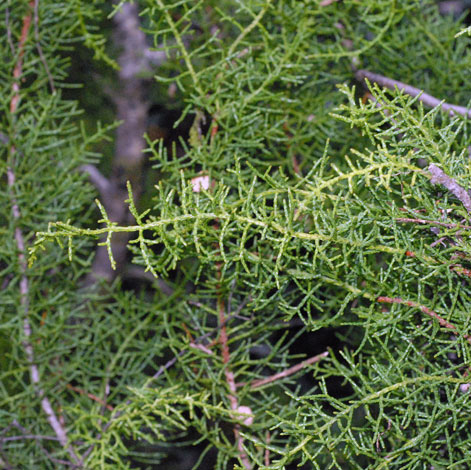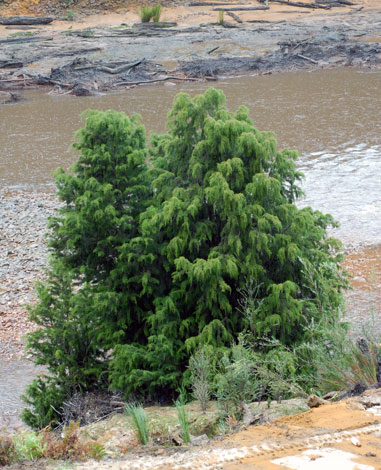Lagarostrobos franklinii Huon Pine Tasmanian Endemic


There are no spectacular flowers on this plant but its story is remarkable. It was first discovered in 1803 soon after the first settlers had made homes in Hobart. Logs had been washed up for a long time on the banks of the Huon river but to everyone's surprise they were unaffected by rot or insect attack. Alongside were the decomposing branches of other trees but this wood stayed intact and had obviously been in that condition for decades.
As soon as it was discovered that it was a good workable material for boat building, the settlers realised they had found the ideal material: it would float down the river in the "green" state, it wouldn't rot or be attacked by insects and it was a beautiful fragrant wood easily worked.
What they didn't know was that the pines they logged on the banks of these western Tasmanian rivers were some of the oldest organisms in the world. They grow at a rate of a maximum increase of 2 mm in diameter per year, so to reach maturity takes hundred of years and some specimens were now known to have been 2,000 or 3,000 years old. Only the North American bristle cone pine (Pinus longaeva) is a longer lived tree.
Recently a collection of very old Huon pines were discovered near Mount Read. They were genetically identical, some as much as 1,500 years old and all male. It is now believed from pollen data they were vegetatively reproduced by layering from the original pine which grew there. This patch is therefore more than 10,000 years old and effectively the same organism. Huon pines will only grow next to water and there are now young trees replacing the old ones logged in the 19th century. They grow slowly on the banks of the rivers in Tasmania's world heritage forests.
Come back in 1,000 years time to see the mature trees.
Surprisingly you can still find new articles made from Huon pine despite its exploitation by the early loggers. They left some logs in the forests and these remnants from that intense logging era will continue to supply today's Tasmanian cabinet makers (who need a special licence to use this wood) for some time yet.
The active ingredient which gives Huon Pine its water and insect proof properties is an aromatic ether known as methyl eugenol. It isn't just a sap ingredient, it suffuses all the wood of the tree. Methyl eugenol occurs in other natural products like aniseed and isn't very toxic at all to humans.
Lagarostrobos franklinii is dioecious and the photo on the right shows both male (left) and female (right) Huon pines. Pollen assumed to be from this plant has been found in sediments more than 100 million years old which suggests that it grew in Australia when it was still part of the super continent known as Gondwana land.
LHS Tahune Forest, Tasmania 27th August 2007, RHS Banks of river nr Queenstown 31st August 2007
Added on 12th October 2007, updated 2nd March 2010, updated 10th November 2015



